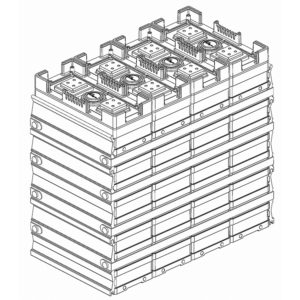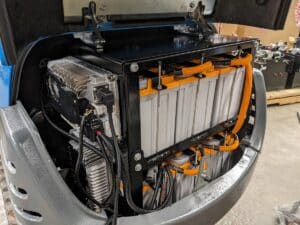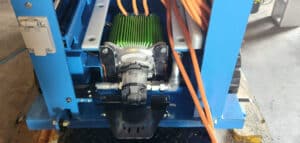Metrology Glossary: Potential EMF
What Is Potential EMF?
Potential Electromotive Force (EMF) is the maximum voltage attainable from an energy source, such as a battery or generator. Typically measured in volts, it’s always in relation to a chosen reference point, often set as ground. When determining voltage at a specific location within a circuit or space, the key is to calculate the difference in potential EMF between that point and the reference point. This difference is essential for understanding current flow and the behavior of electrical systems, ensuring safe and efficient operation in various applications. EMF provides a fundamental metric for assessing an energy source’s electrical potential, guiding the design and operation of electrical systems.
What Is Potential EMF Used For?
- Comparative analysis of energy sources: When assessing different batteries or generators, Potential Electromotive Force (EMF) provides an unbiased means to evaluate their maximum voltage output capabilities. This facilitates the identification of the most effective power source for a specific application.
- System engineering and enhancement: Potential EMF acts as a foundational parameter for calculations and simulations in the design of electrical systems. Awareness of the maximum theoretical voltage allows engineers to make informed decisions regarding component choices, wire dimensions, and safety parameters, contributing to optimized system designs.
- Fault diagnosis and issue identification: In instances of electrical system malfunctions, observed voltage deviations from the anticipated Potential EMF can serve as a valuable clue. This variance becomes an informative indicator of the fault’s location and nature, streamlining the troubleshooting conversion processes.
- Developing new technologies: As researchers look into emerging technologies such as advanced batteries and energy harvesting systems, Potential EMF emerges as a pivotal metric for evaluating their theoretical capabilities. It plays a crucial role in guiding the development trajectory and refining these technologies. and repair processes.
- Understanding energy conversion mechanisms: Devices like generators and transformers undergo transformations of mechanical or magnetic energy into electrical energy, resulting in alterations in Potential EMF. Examining these alterations aids in grasping the fundamental principles and enhancing the efficiency of energy

Related Terms
Inductive reactance is a property inherent to inductors that resists alterations in alternating current (AC) flow, similar to resistance in DC circuits, stemming from the inductor's magnetic field influence....
Electromotive force (EMF) represents the energy per unit of charge transferred to electric charges through a device....
A high potential tester, commonly referred to as a hipot tester, is an instrument used for assessing the insulation resistance of electrical apparatus and components....
Further Reading

The inevitable debate that comes up is whether to go with traditional lead-acid batteries or lithium-ion batteries. At Cross, we believe that lithium-ion batteries are the future for mobile equipment energy storage, so we’ve put together a list of the top reasons we prefer lithium to lead-acid.
April 5, 2021


As the trend toward electrification of mobile equipment accelerates, it is becoming increasingly apparent that simply looking at the power rating of the current Internal Combustion Engine (ICE) and using that to assume battery power requirements is not enough.
September 27, 2022





